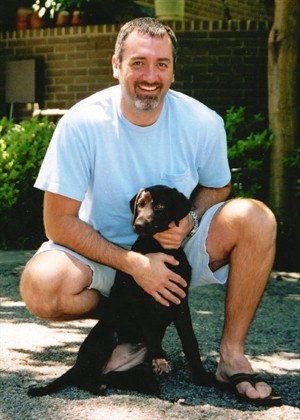In later part of 2003, he started complaining of headaches. They were especially exacerbated with any type of physical exertion. He wouldn’t admit to anyone how challenging at times it was for him to train and finish the MS 150 race in 2004. It was such a happy day – April 18, 2004. Finishing the race was so important to Mark. He was at his happiest. Life was good and the future was bright. He was in such a pain on our drive back to Houston that the gut-wrenching worry overshadowed my thrill and pride for his accomplishment. But as always, he assured me that nothing was wrong and that the headaches and nausea were simply the side-effects of the challenging and testing two-day race from Houston to Austin. By 4th of July weekend, the headaches were now coming on daily and they were more fierce and debilitating than ever. It was obvious something was wrong. Mark’s generalist referred him to a neurologist – the latter then sent him for an immediate MRI procedure. That same afternoon the phone call came in. There was a large mass in his brain’s temporal lobe. Mark was 34. What do you do or say in that moment to your loved one? Is anyone ever prepared for the avalanche of emotions that ensue or the uncertainty of what lies ahead? After that mid-July afternoon, life became a big blur. We saw Dr. Richard Harper at the Methodist Hospital for a consultation and he operated on Mark a few days afterward. The terrifying diagnosis was confirmed: glioblastoma multiforme.
From brain surgery to a daily radiation regimen which lasted for 6 grueling weeks, to countless chemotherapy treatments and hospital stays, Mark endured it all with smile and kindness. He never complained. Not once. Not even when he started losing his balance and ultimately became completely disabled. What was the hardest on me was when all we had to communicate were blinks of an eye or a faint hand squeeze. And with all that being said, one somehow finds inner fortitude to wake up in the morning and embrace each new day with renewed hope and optimism. I admire him for that positive attitude so much: he taught me everything about life and what truly matters. There were so many happy days in our new life that has become our new normal. I was grateful for every day with him. The flowers were more fragrant, the sun shone warmer, and the birds sang more beautifully with him being around to share life. But one day, which will haunt me for the rest of my life, I saw Mark cry for the first time. We both cried. The words were not necessary. I think we were admitting we were scared for the first time and saying goodbye to the life that could have been. Mark died in my arms on September 12, 2006. I am happy he found peace and comfort.
Have you ever seen a sweet gum-tree in fall? Its leaves are star-shaped, similar to those of a maple tree. The one in front of our house, all of a sudden so disturbingly empty, was on fire following Mark’s death, attracting passersby and neighbors alike with its spectacular red, purple and gold hues. The tree started dying off later in the year, as if it pulled out all it had from its old, gnarly roots to give us that one last, glorious splendor for Mark’s send-off to Heaven. As for me, the inner peace took a while to find but it eventually came. The mechanics of everyday life became less dull and sad and I started noticing again the beauty everywhere around me. I have found love again. My husband and I are close to Mark’s relatives and cherish his memory in many ways. My name was Sheila Cooley. Now it is Sheila Gurwitch. Mark Cooley is my hero. I wanted to tell his story. Never give up. Progress in combatting this monstrous disease is being made each day thanks to tireless work of doctors and researchers, as well as organizations such as Dr. Marnie Rose Foundation and the American Cancer Society.
I’d also like to take this opportunity to give a most special thanks to Dr. Pamela New of the Houston Methodist Hospital – for her two years of outstanding dedication and service to Mark and his family.

